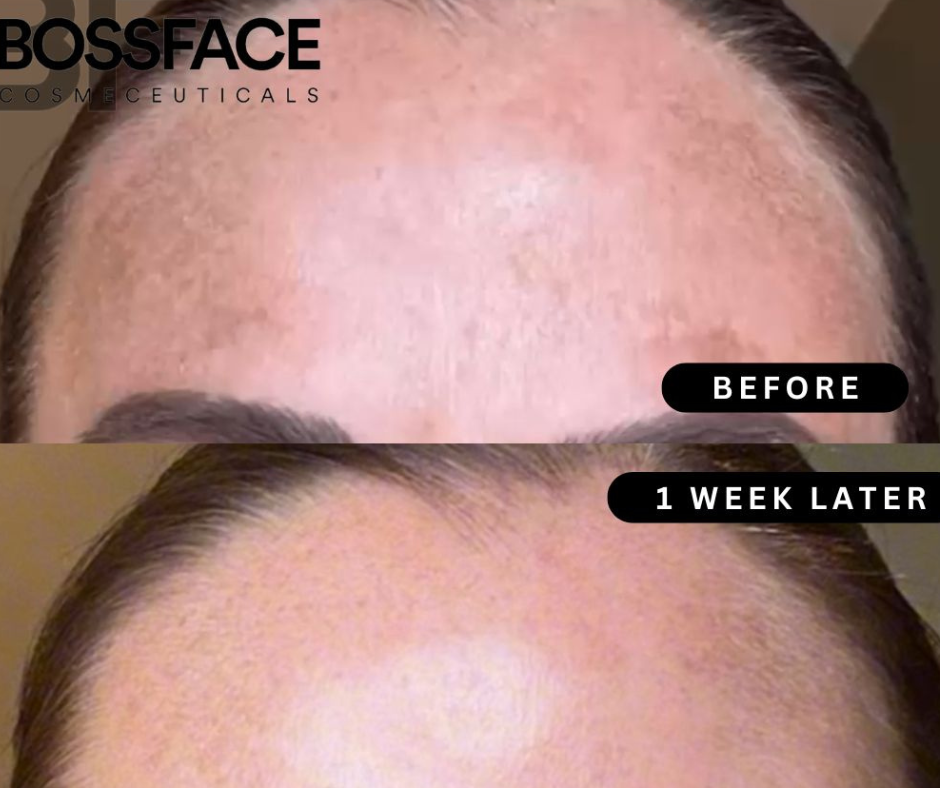
Pigment Suppressors for Hyperpigmentation During Skin Treatments
If you’re planning advanced skin treatments like chemical peels, laser therapy, or microneedling, it’s crucial to protect your skin from post-inflammatory hyperpigmentation (PIH)—especially if you have darker skin tones or are prone to pigmentation.
Pigment suppressors like tranexamic acid, alpha arbutin, vitamin C, and SPF are crucial when undergoing advanced skin treatments because these treatments can temporarily inflame or disrupt the skin barrier, making it more prone to post-inflammatory hyperpigmentation (PIH) and UV sensitivity. This temporary inflammation can also trigger melanocytes (the pigment-producing cells) to overproduce melanin, especially in darker skin tones or those prone to pigmentation.
In this blog, we’ll explore how each pigment suppressor works and why they’re essential for safe, effective skin resurfacing treatments.
Tranexamic Acid
What it does
Inhibits melanin production by interfering with the interaction between melanocytes and keratinocytes.
Why it’s crucial
After procedures that trigger inflammation or heat, melanocytes may overproduce pigment. Tranexamic acid helps prevent melasma and PIH, especially in those with medium to dark skin tones.
Product Recommendation
A key ingredient in our BFx Melanolyte, helping to reduce dark spots and prevent hyperpigmentation.
Alpha Arbutin
What it does
A natural derivative of hydroquinone that inhibits tyrosinase, an enzyme involved in melanin production.
Why it’s crucial
Helps maintain an even skin tone post-treatment by reducing the risk of spotty pigmentation, without being as irritating as hydroquinone
Product Recommendation
A key ingredient in our BFx Melanolyte, known for brightening and even skin tone
Vitamin C (Ascorbic Acid)
What it does
A potent antioxidant that brightens skin, neutralises free radicals, and inhibits tyrosinase.
Why it’s crucial
Post-procedure, the skin is more vulnerable to oxidative stress and UV damage. Vitamin C helps protect against this while promoting healing and preventing pigmentation.
Product Recommendation
Our products feature Vitamin C (Ascorbic Acid) in two strengths—BFx VCE10 and BOSSFACE VTC20—to brighten skin, boost collagen, and target pigmentation at every level.
SPF (Broad-Spectrum Sunscreen)
What it does
Protects skin from UVA and UVB rays.
Why it’s crucial
After treatments, skin is exponentially more sensitive to UV radiation. Even minimal sun exposure can lead to PIH or worsen existing pigmentation. SPF is non-negotiable—daily, rain or shine.
Why are they Crucial?
Using pigment suppressors alongside advanced skin treatments is not optional—it’s a preventive and protective strategy. These ingredients ensure safer outcomes, especially for those with melasma, PIH-prone skin, or deeper skin tones, and maximise treatment effectiveness without the risk of new discolouration. In short, these ingredients work synergistically to protect the skin, minimise pigmentation, and ensure optimal results from any advanced cosmetic procedure. Skipping them could mean delayed healing, poor outcomes, or even permanent discolouration.
Treatment Phases
1. Pre-treatment
Risk: Existing pigment activity
Role of Suppressors: Suppress melanin production
2. During healing
Risk: Inflammation & melanocyte trigger
Role of Suppressors: Minimise PIH risk
3. Post-treatment
Risk: UV sensitivity & oxidative stress
Role of Suppressors: Protect and stabilise skin tone
Ready to fade dark spots and even out your skin tone?
Powerful formulas with Vitamin C, tranexamic acid, and more!
No posts were found for provided query parameters.






